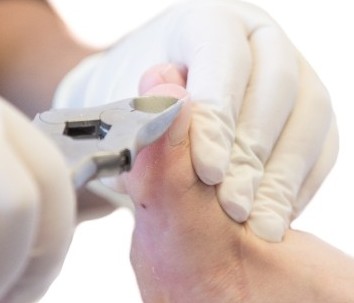
 Recently over our lockdown period, as we were unable to see patients under our higher alert levels, the questions around ingrown toenails came rolling in. A lot of the queries came after people had tried fixing their ingrown toenail at home. Some felt their pain had become worse, for some it stayed the same – and most people just wanted to know what they could do to help get some relief until the restrictions eased.
Given the number of people that tried fixing their nail at home first, we thought we’d share our tips for what NOT to do when you have an ingrown toenail, in case you find yourself in a situation again where you can’t get to your podiatrist for one reason or another.
Recently over our lockdown period, as we were unable to see patients under our higher alert levels, the questions around ingrown toenails came rolling in. A lot of the queries came after people had tried fixing their ingrown toenail at home. Some felt their pain had become worse, for some it stayed the same – and most people just wanted to know what they could do to help get some relief until the restrictions eased.
Given the number of people that tried fixing their nail at home first, we thought we’d share our tips for what NOT to do when you have an ingrown toenail, in case you find yourself in a situation again where you can’t get to your podiatrist for one reason or another.
1. Don’t Rip The Nail Off
When you pick, pull or rip the toenail, though it may seem like a way to get the nail off deeper than you can see, it very rarely helps an ingrown toenail – in fact, it’s often the original cause of ingrown toenails. As you get to the end of the nail and you pull it off, the nail often leaves behind a jagged edge where it is pulled. As it grows, this sharp spicule penetrates the surrounding skin and causes an ingrown toenail.
2. Don’t Cut Deep Down The Side Of The Nail, Beyond What You Can See
Toenails should be cut straight across, following the natural curvature of the toenail. They should not be cut down the side of the nail, as this encourages ingrown toenails. Often, the skin beside an ingrown toenail will swell and start to overlap the nail. This makes it difficult – and painful – to trim a toenail and see what you’re doing – and whether you’ve gotten all of the nail, or have left behind a piece of the nail – or even formed a new nail spicule to cause you pain in the future.
3. Don’t Cut A V In The Middle Of The Nail
It used to be thought that cutting a V in an ingrown toenail could help fix an ingrown toenail by encouraging the nail to grow more towards the centre of the nail to fill the V. Now we know this isn’t true and isn’t helpful. In fact, cutting the V and leaving the nail without proper treatment may worsen the situation as the nail can become infected, or the existing infection may worsen.
4. Don’t Wear Tight Shoes
Not only will it be painful, but it may push the sharp nail spicule further into the skin, causing more damage.
5. Don’t Rely On Painkillers, Antibiotics Or Other Medications To Fix The Problem
An ingrown toenail is caused by a piece of nail entering and growing into the skin. It’s a physical problem that can be relieved by carefully removing the offending piece of nail. Sometimes, rubbing from the nail may even cause a tiny corn in the area, which needs to be removed too for the pain to go away.
Medications do not fix a physical problem like this. Painkillers will help relieve your pain temporarily, but the issue remains, so the pain will come back. Antibiotics can help manage any infection present in the area, or help prevent an infection, but they do not solve the problem of the nail being lodged in the skin. Other medications, like those that bring swelling down, can help give you some relief from the pain by reducing the swelling at your toe. Again, it doesn’t fix the problem. By all means, use medications to help get some relief before you’re able to get proper help, but don’t expect the problem to be fixed and always see your podiatrist as soon as you can.
6. Don’t Let Your Feet Stay In A Damp, Moist Environment
As ingrown toenails occur when a piece of nail pierces the skin, this break in the skin is vulnerable to infection. Bacteria and fungus breed best in dark, warm and moist environments. So don’t leave your feet in these conditions while you have an active ingrown toenail. Dry your feet well and let them breathe.
7. Don’t Attempt ‘Bathroom Surgery’
Finally, don’t try bathroom surgery at home – meaning digging deep into your ingrown toenail while your toe bleeds or you’re in agony. As podiatrists that specialise in ingrown toenails, we have years and decades of experience in detecting and removing ingrown nail spicules. They’re often deep and difficult to see – if you can even see them at all. Sometimes they grow softer and more breakable due to the moisture from piercing the skin. Other times they’re accompanied by a small corn that also needs removal. We see a lot more nails go wrong than right with bathroom surgery, and the nail ultimately becomes more complicated to treat once you get into the clinic. So we recommend avoiding this altogether.
Auckland’s Ingrown Toenail Experts
What you should do is to book in with our experienced podiatrist as soon as alert level restrictions allow. Once it is safe to see you according to the government’s recommendations and the advice we receive from the Podiatry Board, we will prioritise getting you in urgently to care for your ingrown nail.
If you need an appointment for an ingrown toenail ASAP, book yours by calling us on 09 523 2333. Email us here if we’re currently not operating due to lockdown restrictions and you want us to contact you ASAP once we can operate.
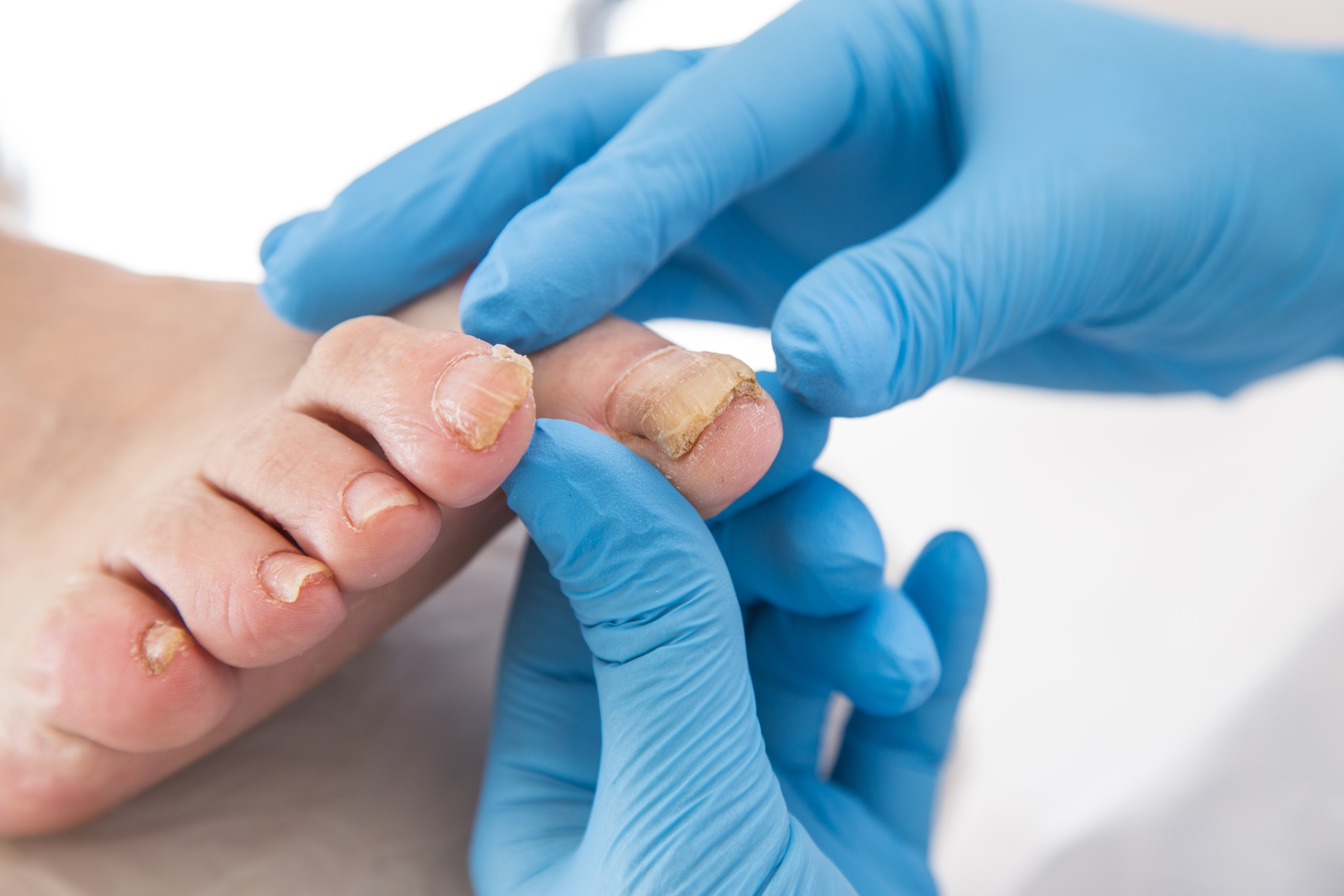
 We know it’s often referred to as ingrown toenail surgery, but honestly – that makes it sound so serious and scary! The truth is that these are very simple and straightforward procedures.
They are done in your regular appointment chair. They are done under local anaesthetic, so it’s painless. The total ‘treatment’ time is normally less than 20 minutes. You have no special precautions beforehand like with other surgeries – you don’t need to fast. In fact, we recommend you eat a good breakfast so that you have a good blood sugar level. In this way, it’s much more like a dental treatment than surgery.
Today, we’re exposing the truth behind Partial Nail Avulsions (PNA) – and why they should not be feared, but looked forward to in terms of the relief you can expect to experience once your pain is gone, and you don’t have to keep putting up with one ingrown toenail after another.
We know it’s often referred to as ingrown toenail surgery, but honestly – that makes it sound so serious and scary! The truth is that these are very simple and straightforward procedures.
They are done in your regular appointment chair. They are done under local anaesthetic, so it’s painless. The total ‘treatment’ time is normally less than 20 minutes. You have no special precautions beforehand like with other surgeries – you don’t need to fast. In fact, we recommend you eat a good breakfast so that you have a good blood sugar level. In this way, it’s much more like a dental treatment than surgery.
Today, we’re exposing the truth behind Partial Nail Avulsions (PNA) – and why they should not be feared, but looked forward to in terms of the relief you can expect to experience once your pain is gone, and you don’t have to keep putting up with one ingrown toenail after another.
Step one: We get you ready, you sit back and relax
When you first come in for your procedure, you have a really important job: Sit back and relax.
We are assuming that you’ve already signed the consent forms, asked every single question on your mind, and are a good fit to have the procedure (like that you don’t have severe circulatory problems that mean you don’t heal). If you haven’t, that’ll be the first step.
We’ll start getting you ready by cleaning and disinfecting your foot and toes. We follow strict hygiene and sterilisation protocols here, so take the time to help you have the best experience with us and your procedure. This is completely painless, and if you’re not interested in watching what is happening to your feet, you may wish to scroll through your newsfeed or catch up on emails.
Step two: We numb your toe
You sit back and relax, we inject anaesthetic through a small, fine needle directly into your toe. You’ll feel a short-lived pinch, and then we’ll wait five or so minutes for the numbness to take full effect. We’ll feel around your toe, making sure that you definitely can’t feel any sensation. Once you give us the all-clear, we start the procedure!
Step three: Goodbye, small piece of ingrown toenail
Your procedure starts with us wrapping a ring around the toe (tourniquet) so that it doesn’t bleed when we do our thing. Next, we’ll cut your nail, in the corner where the nail has ingrown, and remove it from the corner using fancy sterilised equipment.
We need to emphasise: This is not half your toenail, or even a quarter. It is a small sliver of nail, close to the nail edge. Your nail will not look disfigured or unusually small. Normally, it is unnoticeable until you point it out to a friend, in which case their response is something along the lines of “Oh, yeah, I can see that the edge of that nail is very straight”. We keep your cosmetic appearance in mind, so only remove as much nail as we need to to get the job done well
Step four: Making it permanent
If you’ve opted for a permanent ingrown toenail treatment, this is the step where we’ll apply a chemical to the base of the nail to destroy the nail growing cells. Without nail growing cells in that nail edge, the goal is that the nail won’t grow back.
We’ll flush the chemical out after 90 seconds, and then we’re almost done!
Step five: We wrap your toe up
It’s time to dress your toe. We’ll apply an antiseptic ointment or two to the area, dress it well using sterile dressings, and run you through the do’s and don’ts until we see you in a few days’ time.
Step six: Goodie bag!
We give you a goodie bag to take home, filled with dressing materials and written instructions (because people forget easily, and we understand). Alternatively, we may give you your goodie bag at your next appointment.
Step seven: Your 2-3 day check
Two or three days after the procedure, you come in and we check how your toe is looking and that everything is progressing as we’d expect. We’ll redress your toe, and teach you the right way to do it using the materials in your goodie bag.
That’s it.
You’ll be redressing your toe for the next week, following instructions, and you may see us again one more time, but that truly is it. Nothing scary, or nerve-wracking. Yep, the anaesthetic can be unpleasant if you dislike needles, but it’s so short-lived that it’s over before you know it.
If you’ve been battling recurring ingrown toenails and want a permanent solution – book in with our experienced podiatry team by clicking here or calling us on (09) 523 2333.
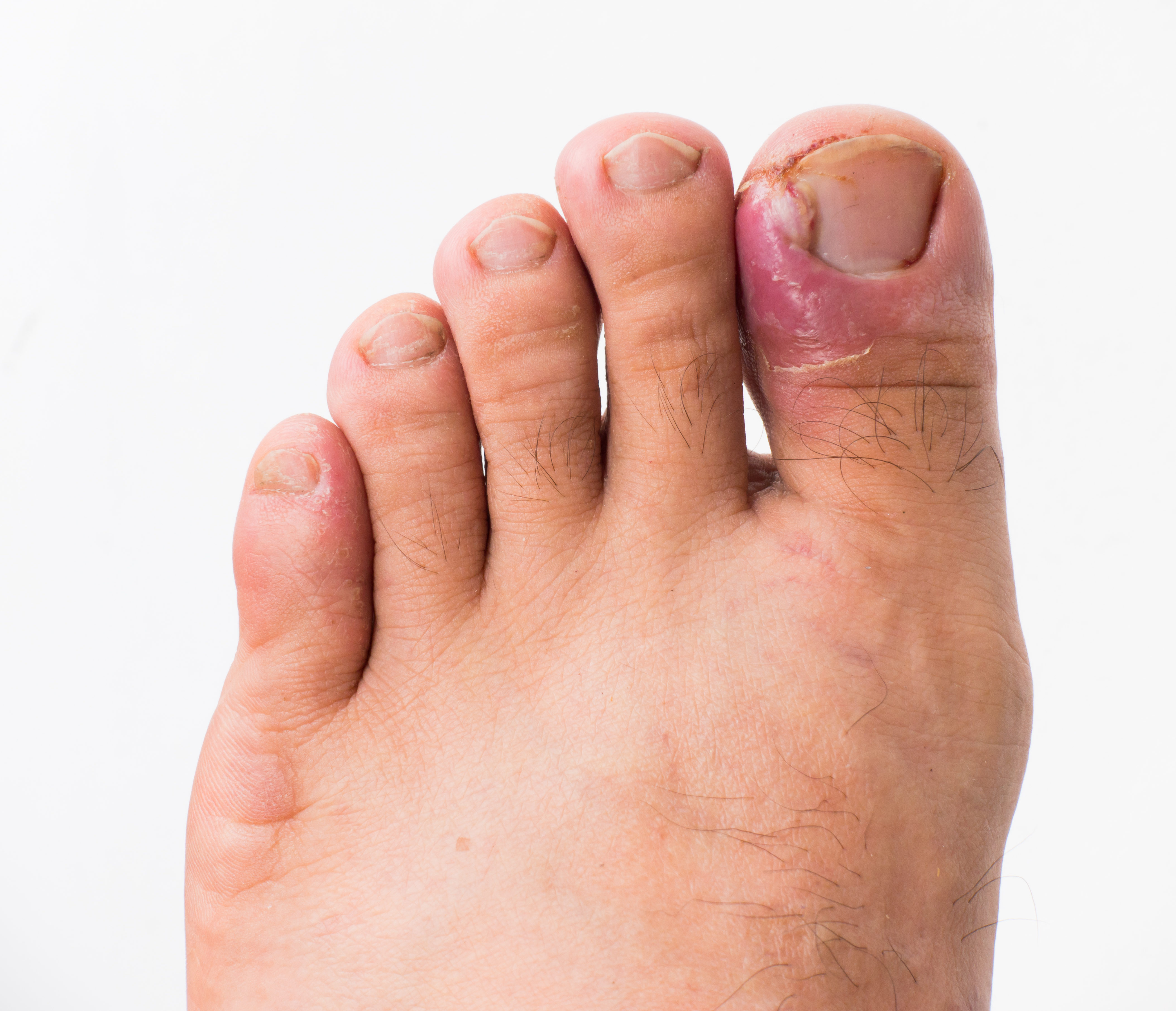
Ingrown toenails are painful and frustrating enough, so the last thing you want is to add an infection to the mix. Unfortunately, in our experience, a large number of ingrown toenails will get infected if proper treatment is undertaken – and it makes sense when you think about it.
Today, our ingrown toenail specialists will be sharing:
- Why the risk of developing an infection once you have an ingrown toenail is high
- What you can do to prevent an infection before it develops
- How you can treat your ingrown toenail and infection once it has occurred
You Have A Significant Risk Of Developing An Infection. Here’s Why
Let’s clear something up: ingrown toenails and infections are not a case of the chicken and the egg – the ingrown toenail comes first.
What classifies a sore toe as an ‘ingrown toenail’ is the moment that the sharp piece of nail goes from merely pushing against the surrounding skin, to actually piercing it and penetrating it.
Think about that for a second – you have a piece of nail that is now constantly inside the skin through a cut down the side of the nail. Every time you walk and move, it’ll move slightly with vibrations of pressures from shoes and socks. Ouch! This also means that while a normal cut occurs and then can heal, this cut can’t – because the ingrown toenail is still constantly piercing it and so keeping the cut open.
An infection occurs when bacteria and other nasties enter the body. Usually, our skin is a fantastic barrier, so while there may be many nasties around us regularly, they never have an ‘in’. Until now. And especially at the ground where you may walk barefooted. And when you give it a perfectly placed entrance – there’s a strong chance that the infection will take hold and start to develop.
Once the infection takes hold, it means increased swelling, pain and oozy discharge (and maybe blood) that is yellow/green/clear in nature and may ‘crust over’.
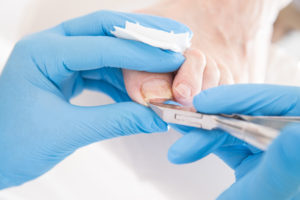
Preventing An Infection From Your Ingrown Toenail Before It Develops
So how, then, can we prevent – or at least reduce the risk – of developing an infection? It’s quite simple, really. And no – no Epsom salts required just yet!
As the cut from ingrown toenail creates an ‘in’ for the bacteria to take hold, the way to prevent an infection is to remove this ‘in’. This means removing the penetrating nail edge so that the cut can heal, close, and no longer be vulnerable to the infection. Simple, right? – Absolutely.
So How Do I Treat My Ingrown Toenail – And The Infection If I Already Have One?
The best way to ensure the proper care of your ingrown toenail is to see your Podiatrist. Our team here at the Ingrown Toenail Clinic are Podiatrists that are trained in simple and painless ingrown toenail surgeries, as well as conservative care where we safely remove that small, pesky nail edge in a matter of minutes. You’ll feel the relief almost instantly!
We don’t recommend trying to cut back the nail at home because often the nail runs much deeper than you can see, so most people will miss removing the complete penetrating edge and their pain will only continue to worsen. You also won’t have the right tools for the job – whereas we have everything needed to do it quickly and easily – even anaesthetic if you need or want it! (though most people don’t).
Once the sliver of nail is removed, the body will be able to effectively heal the wound and fight the infection – and of course, we’ll help it along by dressing it with betadine (antiseptic). You’re welcome to soak it in some Epsom salts too – but once the nail is out, it should be relatively simple and straightforward for it to heal and the infection to subside.
No more painful, swollen discharge – hooray!
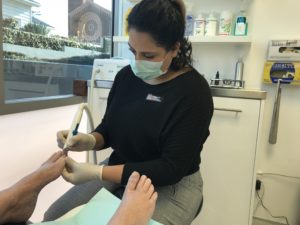
Auckland’s Ingrown Toenail Experts
We’re proud to be Auckland’s only Podiatry clinic that specialises in the safe and effective care of ingrown toenails – and we do a really good job of it. From simple and easy care to quickly remove the small nail edge, to minor nail surgery to permanently correct ingrown toenails, we’ve got you covered.
You can book online here or give us a call on (09) 523 2333.
 Recently over our lockdown period, as we were unable to see patients under our higher alert levels, the questions around ingrown toenails came rolling in. A lot of the queries came after people had tried fixing their ingrown toenail at home. Some felt their pain had become worse, for some it stayed the same – and most people just wanted to know what they could do to help get some relief until the restrictions eased.
Given the number of people that tried fixing their nail at home first, we thought we’d share our tips for what NOT to do when you have an ingrown toenail, in case you find yourself in a situation again where you can’t get to your podiatrist for one reason or another.
Recently over our lockdown period, as we were unable to see patients under our higher alert levels, the questions around ingrown toenails came rolling in. A lot of the queries came after people had tried fixing their ingrown toenail at home. Some felt their pain had become worse, for some it stayed the same – and most people just wanted to know what they could do to help get some relief until the restrictions eased.
Given the number of people that tried fixing their nail at home first, we thought we’d share our tips for what NOT to do when you have an ingrown toenail, in case you find yourself in a situation again where you can’t get to your podiatrist for one reason or another.

 Recently over our lockdown period, as we were unable to see patients under our higher alert levels, the questions around ingrown toenails came rolling in. A lot of the queries came after people had tried fixing their ingrown toenail at home. Some felt their pain had become worse, for some it stayed the same – and most people just wanted to know what they could do to help get some relief until the restrictions eased.
Given the number of people that tried fixing their nail at home first, we thought we’d share our tips for what NOT to do when you have an ingrown toenail, in case you find yourself in a situation again where you can’t get to your podiatrist for one reason or another.
Recently over our lockdown period, as we were unable to see patients under our higher alert levels, the questions around ingrown toenails came rolling in. A lot of the queries came after people had tried fixing their ingrown toenail at home. Some felt their pain had become worse, for some it stayed the same – and most people just wanted to know what they could do to help get some relief until the restrictions eased.
Given the number of people that tried fixing their nail at home first, we thought we’d share our tips for what NOT to do when you have an ingrown toenail, in case you find yourself in a situation again where you can’t get to your podiatrist for one reason or another.


 We know it’s often referred to as ingrown toenail
We know it’s often referred to as ingrown toenail 

